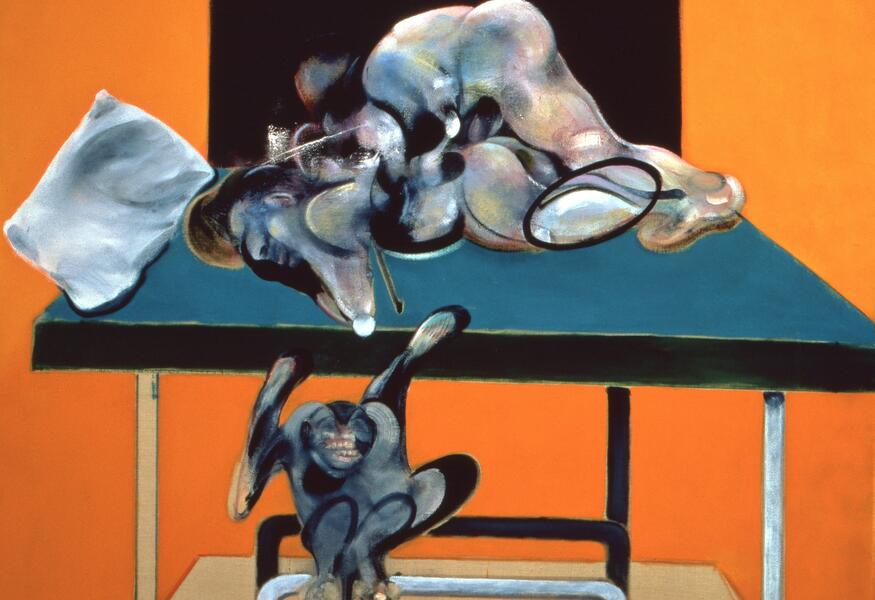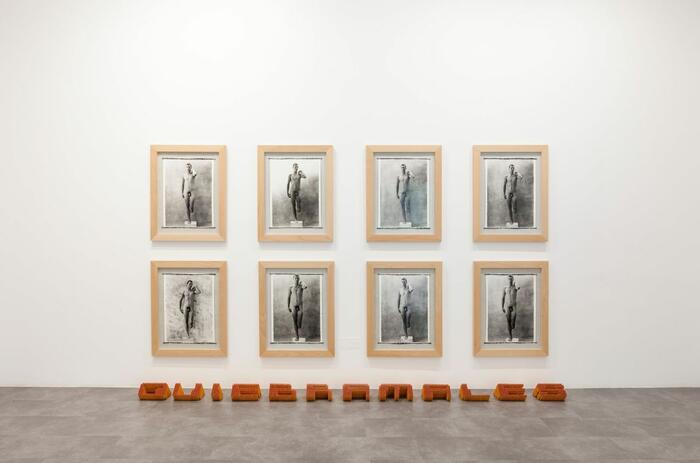THE MONOGRAPHIC EXHIBITION BY BRITISH ARTIST FRANCIS BACON AT MASP
Museu de Arte de São Paulo Assis Chateaubriand (MASP) presents, from March 22 to July 28, 2024, the exhibition Francis Bacon: The Beauty of Meat. Curated by Adriano Pedrosa, Laura Cosendey, and Isabela Ferreira Loures, the exhibition aims to highlight how the artist, with his innovative and impactful painting, paved the way for a queer presence in visual culture.

Contextualized in the year dedicated to Queer Histories at MASP, the exhibition highlights the queer aspects that permeate the artist's work and the way in which his sexuality emerges in the different phases of his production.
Spanning over four decades of the Irish artist's work, the exhibition brings together more than twenty works by Bacon, from the early decades of his production to the 1980s, and is accompanied by a catalog with unpublished essays.
Francis Bacon (Dublin, Ireland, 1909-1992, Madrid, Spain) is considered one of the most important painters of twentieth-century art, with more than six decades of production. The son of English parents, he had a difficult childhood in a violent family environment. At the age of sixteen, his father threw him out of the house and, after spending time in Berlin and Paris, he settled in London from the 1930s onwards, where he began his career as an artist. Bacon built up a strong and striking oeuvre, becoming a key figure in the renewal of figurative painting.
The artist focused especially on male figures, his object of desire, in portraits and nudes. The exhibition features portraits of men with whom he had remarkable relationships, such as Peter Lacy (1916-1962) and George Dyer (1934-1971), as well as other important figures in his life, such as his close companion John Edwards.
-
Francis Bacon (Dublin, Irlanda [Ireland], 1909-1992, Madrid, Espanha [Spain])
Man at a Washbasin [Homem em um lavatório], c.1954
Óleo sobre tela [Oil paint on canvas], 170.8 × 135 cm
Private Collection
CR 54-02
© The Estate of Francis Bacon. All rights reserved. AUTVIS, Brasil / DACS/Artimage, London 2024. Photo: Prudence Cuming Associates Ltd
-
Francis Bacon (Dublin, Irlanda [Ireland], 1909-1992, Madrid, Espanha [Spain])
Study for Self-Portrait [Estudo para autorretrato], 1981
Óleo sobre tela [Oil on canvas], 198 × 147.5 cm
Von der Heydt-Museum, Wuppertal
CR 81-06
© The Estate of Francis Bacon. All rights reserved. AUTVIS, Brasil / DACS/Artimage, London 2024. Photo: Prudence Cuming Associates Ltd
-
Francis Bacon (Dublin, Irlanda [Ireland], 1909-1992, Madrid, Espanha [Spain])
Two Figures with a Monkey [Duas figuras com um macaco], 1973
Óleo sobre tela [Oil on canvas], 198,5 × 148 cm,
Museo Tamayo Arte Contemporáneo, INBAL, Secretaría de Cultura
SIGROPAM: 14737
CR 73-09, Cidade do México [Mexico City]
© The Estate of Francis Bacon. All rights reserved. AUTVIS, Brasil / DACS/Artimage, London 2024
The physicality of the body is translated by the artist using thick, oily textures, giving the figures almost abstract forms. Bacon's paintings bring together a wide variety of iconographic sources, revisiting canonical themes and combining references from art history with his personal experiences and perceptions of the male body.
Bacon's production accompanies the significant changes in the queer experience in the British social context, since sexual acts between people of the same gender were only decriminalized in England in 1967, after the enactment of the Sexual Offenses Act. These transformations had significant consequences for the artist's work. Still in the 1950s, Bacon produced Two Figures (1953) and Two Figures in the Grass (1954), works that mark a turning point in his career. In both, two male bodies appear in the scene, intertwined and pushing the boundaries of the body. These pairs of figures, which the artist referred to as “couplings,” could be confused with images of wrestlers going head-to-head, amplifying the ambiguity of the queer images presented by Bacon.
If initially his production was marked by a certain ambiguity between desire and violence, especially in the 1950s, the presence of the erotic and of homosexual relationships gradually became more evident. The work Man at a Washbasin (circa 1954) also suggests a sense of intimacy based on a commonplace gesture: an arched human figure leaning over the sink. The painting suggests this bond by portraying a moment of privacy in dealing with the body.












